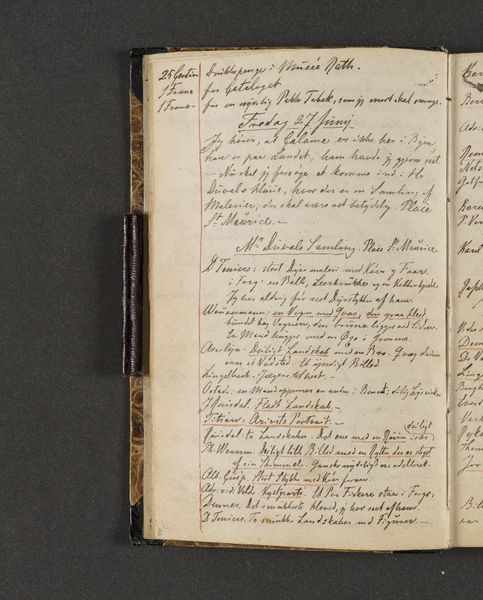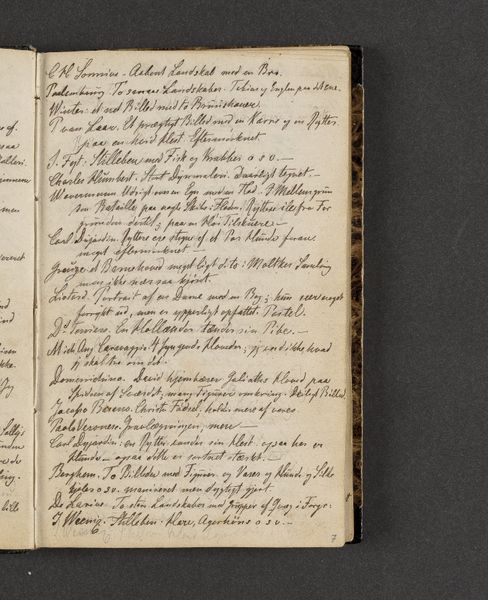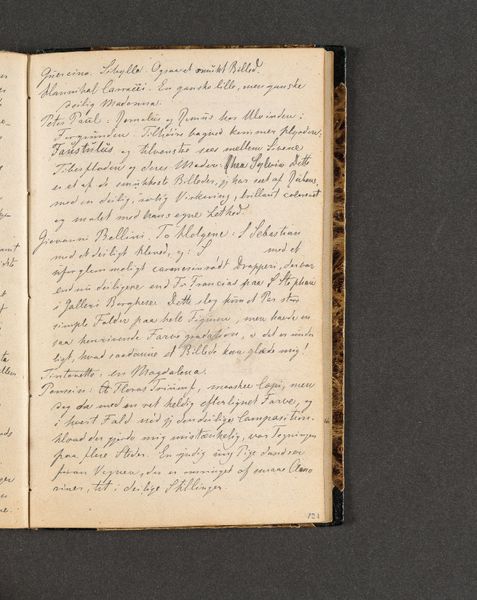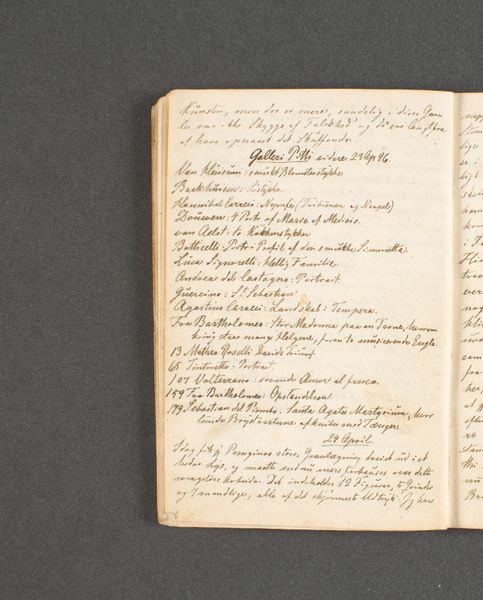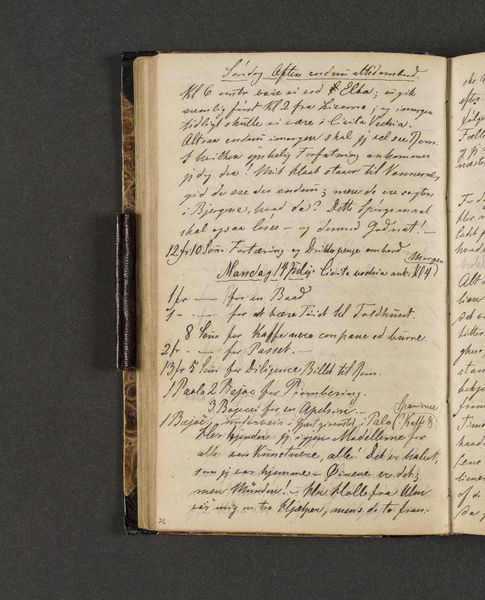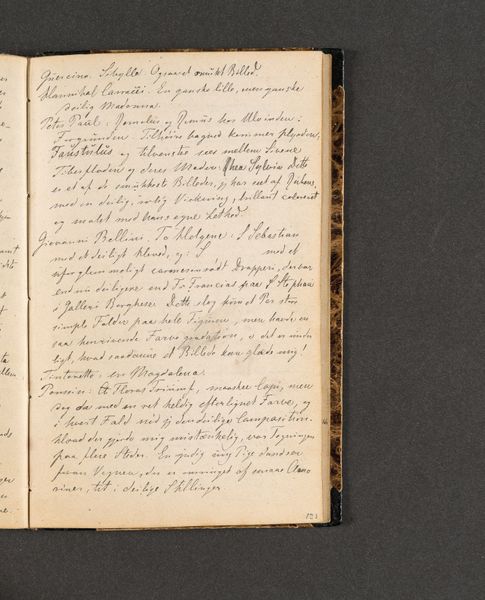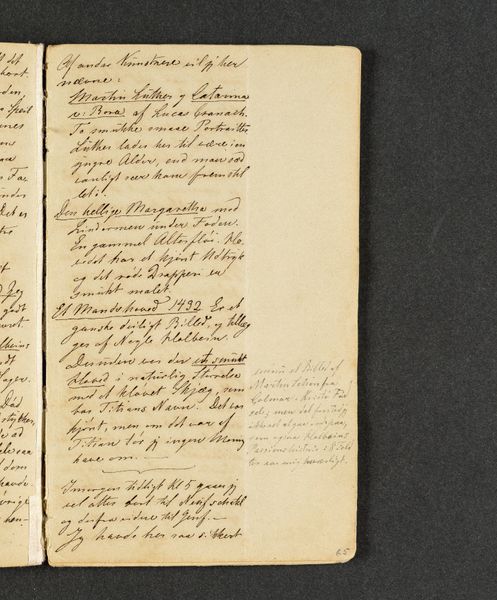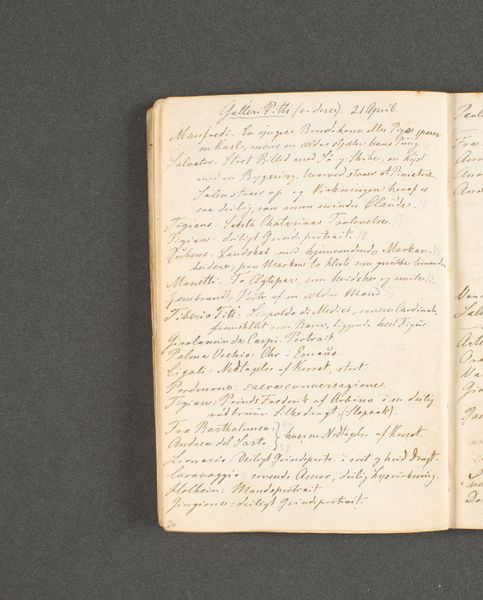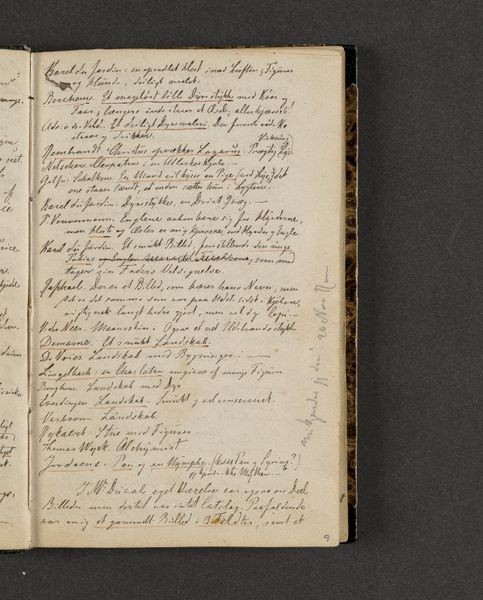
drawing, paper, ink
#
portrait
#
drawing
#
paper
#
ink
#
romanticism
Dimensions: 161 mm (height) x 103 mm (width) x 11 mm (depth) (monteringsmaal)
Curator: This artwork is a page from Johan Thomas Lundbye's travel journal, dated 1846, currently residing at the SMK – Statens Museum for Kunst. The media includes ink on paper, indicative of a more personal, immediate artistic experience. Editor: My first impression is that it resembles more a hurried catalog than anything. It is predominantly textual with just hints of the visual world. The cramped handwriting suggests a dynamic, perhaps restless energy. Curator: Indeed. Lundbye's "Rejsedagbog," is fascinating as it presents a direct link to the artist's personal encounters and observations, revealing much about the Romantic spirit's fascination with travel and personal experience during the 19th century. These kinds of journals offer crucial perspectives into the artist's world – social, political and emotional. Editor: If we put that aside, from a structural perspective, the page offers us a series of encapsulated observations, likely sketches jotted down from nature with added, dense textual descriptions which serve to further clarify and contextualize the experience for the viewer. Curator: Exactly. What might appear simply descriptive could reveal the ideological underpinnings of the time. The places and subjects Lundbye chose to record in his diary provide insight into which aspects of Italian culture resonated with a Danish artist working in the Romantic style. We could extrapolate from these references ideas around nationhood, identity, and the construction of a Romantic sensibility. Editor: Semiotically, each phrase becomes a signifier, pointing not just to the objects, places, and people observed, but to a wider network of meanings—cultural prestige, artistic influence, perhaps even longing. Curator: Yes, it offers a nuanced glimpse into the social and artistic atmosphere shaping Lundbye's practice, allowing us to understand him within the broader framework of European Romanticism, particularly focusing on how place and cultural identity played out through artistic expression. Editor: A close study of form in Lundbye’s records adds layers of complexity—an almost diaristic attempt to impose order upon chaotic, disparate information—suggests perhaps that this format mirrors a personal desire to impose structure on one's experiences. Curator: Considering his broader body of work and Denmark's own search for cultural and national identity at that time, I wonder if this travel journal represents a quest to contextualize his artistic path within the context of Europe's cultural centers? Editor: It makes sense to me; seeing them side-by-side, we could suggest that they echo the structure found in his sketches or paintings. Lundbye's work might represent both experience and documentation of personal artistic philosophy.
Comments
No comments
Be the first to comment and join the conversation on the ultimate creative platform.

